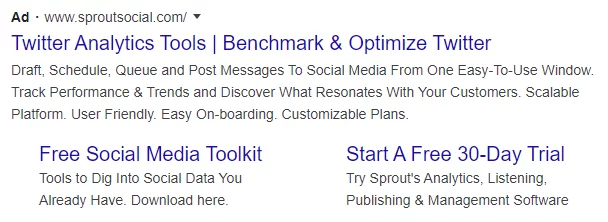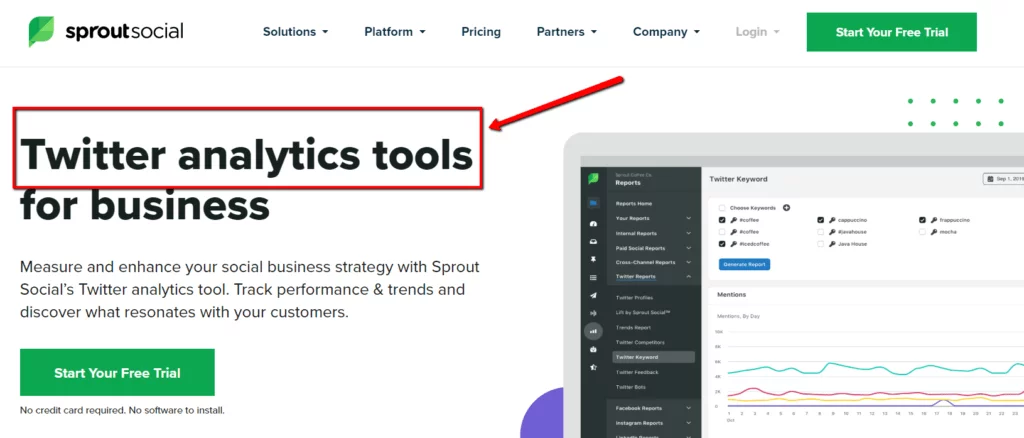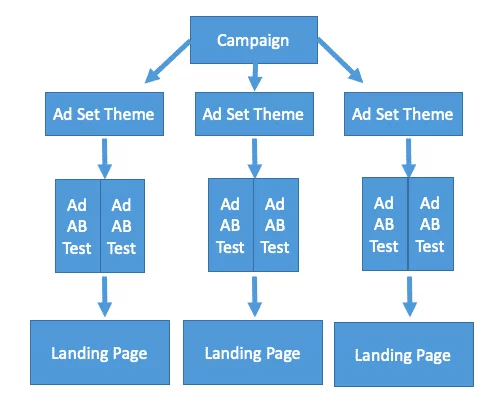Custom Post-Click Landing Pages Convert Much Higher. Period.
Having intent is the overall determination to perform an action. Customers intend on going to the grocery store to purchase groceries. They intend on going to the gas station to fill up our cars with gas. When they search on Google and click on an ad that resonates with their desired intent, they expect the post-click landing page to display information directly linked to their search because they intend to take action.
Whether that be shopping for an item and or searching for a company to provide a service, if a landing page does not resonate with the potential customer’s intended search, then businesses risk their campaigns seeing an overall decrease in conversion rate, as well as their overall ad quality score. You may be asking, what is an Ad Quality Score? And what does that have to do with my landing page performance?
Ad Quality Score: What Does It Have To Do With Your Landing Page?
When you run a Google Ads campaign and are managing the ads by bidding on a specific keyword, Google judges your keyword and all that is involved with it, specifically your ad copy and landing page. Google wants to ensure that when you bid on a keyword, your assets resonate with the intent behind the potential customer’s Google search.
In Google’s words: “The 1-10 Quality Score reported for each keyword in your account is an estimate of the quality of your ads and post-click landing pages triggered by that keyword. Having a high-Quality Score means that our systems think your ad and post-click landing page are relevant and useful to someone looking at your ad.”
Overall, the Ad Quality Score takes in three factors in determining a score: expected click-through rate, ad relevance, & post-click landing page user experience. So the more relevant your assets are to the customer’s intended search, the higher the overall Ad Quality Score.
Matching User Intent With Your Landing Page
I am going to type into my Google search query “Twitter Analytics Tool”, and as a searcher, I am expecting to see results related to Twitter Analytics Tools and be provided with the information I am searching for.
Here is an ad, as well as the post-click landing page for the analytics software by SproutSocial.
Notice the connection linked between my search “Twitter Analytics Tool”, the Google Ad highlighting Twitter Analytics Tools, and then the post-click landing page specifically stating Twitter Analytics Tools.
This is a strong example of message matching and how a landing page should reflect the keyword initially being searched. It also includes insights on what the service provides.
From this landing page, I immediately know the following:
- This service offers a Twitter analytics tool that I could utilize for business.
- It allows me to measure and enhance your social business strategy.
- A “Free Trial” is available with no credit card required.
Relating your landing page to the intent behind the searcher’s keyword will overall entice the searcher to explore the services further, and ultimately not bounce off of the site in search of other options. Utilizing message matching allows for the user to have an overall great landing page experience.
So conceptually, this is the overall structure to use to match your campaign with the searcher’s intent.
Understanding The Landing Page Experience
If you or your Google ad agency are running a Google campaign for your retail company, you do not want to utilize the same landing page for your Black Friday sale as you would for your Fourth of July sale. It all comes back to message matching and ensuring that you create a landing page that your visitors can trust and will provide them with the services or offers they expect to receive.
What if you clicked on a link promoting Black Friday sales and you were taken to a page for Fourth of July sales? Of course that’s exaggerated, but the same logic applies to any situation where you are not sending the traffic to their direct search. For example, sending someone searching for a specific product or product category to your homepage instead of that specific product or category page is a huge mistake. If they are searching for a specific product, send them to that exact product’s page. If they are searching for a broader category, like searching for ‘sneakers’ instead of a specific sneaker, send them to the category page. You would not want to send them to a page for other products when they’re searching for a sneaker.
That’s because they would most likely assume that they’ve have arrived on the wrong page and immediately back out of it in search of what they really want. That action immediately tells Google that this site may not be what it says it is and does not provide a strong user experience. The result of this action is Google lowering the overall ad quality score.
That is why every Google Ads campaign needs its own post-click landing page that connects with the user’s intended search.
The Benefits of Evaluating Landing Page Performance
When you change your ppc strategy to make your ad copy more specific and targeted to the user’s needs and wants, you can expect an overall higher ROI, as well as increases in overall conversion rates.
If my intended search is for Twitter Analytics Tools, and I choose to click on an ad, then I am expecting to find Twitter Analytics Tools. As well as the post-click landing page to be informative and easy to use/navigate. (Whether I am utilizing desktop or mobile)
Anything other than that, being the initial searcher, I will be easily swayed to abandon the landing page to return to the previous search engine results page. Ultimately, you have then lost my business and also potential future business by having your quality score lowered from providing a poor displayed landing page.
As mentioned above, the lower your ad quality score, the fewer potential customers will be able to view your ad.
Building Your Landing Page For Ads
We understand that building a landing page can be a daunting task. Most people do not even know where to start. Which is why they ended up using one landing page for all their campaigns to begin with. So we decided we’d give away our landing page template. This template is a proven formula that will increase your conversion rates and decrease your cost per lead. With this template, we’ve seen clients cost per lead consistently drop. For example in the template guide, we cover a landing page that brought a bankruptcy attorney’s cost per lead from $200 down to only $40. Download our free template below to get the proven formula and increase your conversion rates.



